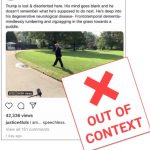A guest post by Marnie Goodbody, a Research Services librarian.
The Problem
What are disinformation and misinformation, and why do they matter?
Disinformation and misinformation are the spread of false and often divisive information on the internet.
Disinformation is false information created and spread purposefully to deceive people. It can be out of malice (for example, to spread fear, suppress voting, create chaos). It can also be as satire, or for financial gain (for example, click bait or false advertising).
Misinformation is false information spread unknowingly. An example of this is a shared post that is false but that the sharer thinks is true or harmless.
Why are disinformation and misinformation important?
- They spread hatred and incivility
- They are divisive, and exploit the worst aspects of our culture such as hatred, intolerance, racism, and sexism
- They divert public conversations away from solutions and constructive action, and into attacks and accusations
- They hijack the democratic potential of the internet
- They undermine our ability to agree that anything is true, and so weakening our ability to control our future as a democratic society.
Disinformation is all over the political and social spectrum—both left and right.
False information is not a new phenomenon (think propaganda). Technology, however, magnifies its power and disinformation spreads at warp speed.
It is up to us, as information consumers, and as creators and sharers of posts, to take responsibility for our actions. We must be able to identify false information, not spread it, and try to stop it.
Examples
Example 1: cited by the News Literacy Project as an example of posts that are sheer assertions, or claims made without any evidence. It was shared more than 4,000 times. Click on the image below to view the full size.
Example 2: cited by the News Literacy Project. This is an example of common strategy of using a photograph or video out of context. The video was edited and used to suggest a set of circumstances that never existed. Notice how many views it had. Click on the image below to view the full size.
Example 3: cited by Buzzfeed. This is another photo presented out of context to create a lie. This image is not an explosion inside a Minneapolis police station. It is from an explosion in Tianjin, a city in China, which occurred in 2015. Notice how many retweets the false post had. Click on the image below to view the full size.
Solutions
Don’t give up! Throwing up our hands and saying that we can’t rely on any information is dangerous. Reliable information is out there, we just have to look.
Here are some steps you can take to spot false information and stop its spread:
- Be skeptical. Engage your critical thinking skills and be a truth-detective. Verify the images and claims you see before sharing them. Look to see how other information sources are covering the same story and see how or if they differ. Do a reverse image search (see below) to see if the photo or post has been changed (especially if it is of a sign or words on a t-shirt). Check for sources and verification.
- Beware of posts that provoke a strong emotional response, or that are posted during a time of crisis. This is when disinformation is mostly commonly spread, and when we are most vulnerable to its message.
- Educate yourself about disinformation and what it looks like. Check out some of the sources and links below to read up on what’s going on.
- Did you receive an invitation to a protest or some other event? Verify accounts if you are receiving an invitation to attend a gathering or protest—they may be false. Well-meaning people are being invited to attend protests from false email or social media accounts. Is someone using an organization’s name to fool you? Fake accounts will often be those that recently joined Twitter or Facebook, and if they have a lot of recent activity, that’s another red flag.
- Check your own biases. It is natural for humans to seek out and believe information that they already agree with. Many of us get into an echo chamber, reading, watching, and seeing items that reinforce our beliefs, pushing us further into tribalism. Try to check your reactions, take a deep breath and try to evaluate the information calmly and rationally.
- Take a look at where you get your news and information. Take a break from the news spread by social media. Seek out reliable sources, then create rss feeds or use a news aggregator to receive information from reliable, varied sources that you consciously select. Get out of your information bubble and get some different points of view.
Library Resources
There are some good library resources to explore this topic and learn more about disinformation, media literacy, our current state of affairs, and history:
- Read more about the role of disinformation in today’s civil environment and in history with this booklist.
- Explore controversial subjects and how opposing sides view them with the library database, Gale in Context: Opposing Viewpoints (library card or eCard required for remote access).
- Explore how maps can be used to distort and deceive in the Norman B. Leventhal Map and Education Center’s online exhibit, Bending the Lines: Maps and Data from Distortion to Deception.
- Watch documentaries on Kanopy, such as Post Truth Times: We the Media (2017), Digital Disconnect - Fake News, Privacy, and Democracy (2017).
Other Online Resources
Web Literacy for Student Fact-checkers . . . and Other People Who Care About Facts, (eBook) by Mike Caulfield. Pressbook.
How To Do a Reverse Image Search From Your Phone, PC Magazine, 2/5/2020
How To Do a Reverse Image Search (Desktop and Mobile), SEMrush blog post, 7/30/2020
Free online self-paced class from KQED in San Francisco (for adults)
How to Talk To Friends and Family Who Share Misinformation, from PEN America
Dispelling Common Voting Disinformation Narratives from Common Cause
Is That A Fact? Webcast from the News Literacy Project
Common Cause is a non-partisan not-for-profit organization that protects voters’ rights. This year they are mobilizing volunteers to monitor social media for misinformation and disinformation. Explore their website for more information.
Educational Materials About Media and News Literacy for Students of All Ages
Center for News Literacy: free resources from the Stony Brook University School of Journalism. Free resources for teachers, students, and everyone on news literacy and critical thinking skills.
News Literacy Project: free resources for educators and journalists to give students the skills they need to discern fact from fiction and to know what to trust.
Facing Ferguson: News Literacy in a Digital Age: Curriculum for students from the educational website, Facing History and Ourselves.
Mediawell: from the Social Science Research Council, established to track and curate research about mis- and dis-information. The content in this resource is academic in nature.





Add a comment to: Disinformation, Misinformation, and Media Literacy